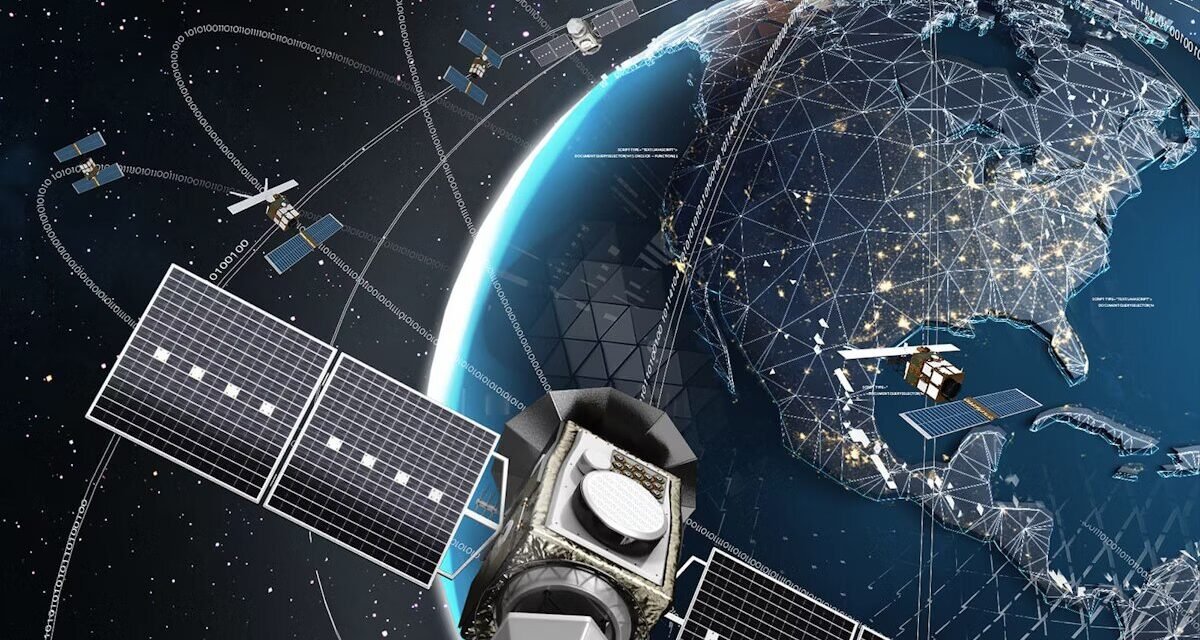Communication systems are critical components of spacecraft and satellites, enabling the transmission of data, commands, and telemetry between the spacecraft and ground stations, as well as between spacecraft themselves in some missions. These systems must function reliably in the harsh environment of space, ensuring clear, uninterrupted communication over vast distances. Integration of communication systems into spacecraft and satellites involves several key steps and considerations:
1. Components of a Communication System
1.1 Antennas
- Function:
- Transmit and receive radio signals between the spacecraft and ground stations.
- Types:
- High-Gain Antennas (HGAs): Focused beams for long-distance communication (e.g., deep-space missions).
- Low-Gain Antennas (LGAs): Wide-angle beams for close-range or omnidirectional communication.
- Phased Array Antennas: Electronically steerable antennas used in modern satellites for flexibility and rapid beam adjustment.
- Integration:
- Mounted on deployable booms or fixed positions depending on mission needs.
- Deployment mechanisms are tested extensively to ensure reliable operation in space.
1.2 Transponders
- Function:
- Amplify, convert, and relay signals.
- Key Features:
- Operate in specific frequency bands (e.g., X-band, Ka-band) for optimized signal clarity.
- Include redundancy to ensure continuous operation in case of component failure.
1.3 Radio Frequency (RF) Systems
- Function:
- Modulate and demodulate signals for effective transmission and reception.
- Integration:
- Located in shielded areas of the spacecraft to prevent interference from other systems.
1.4 Telemetry, Tracking, and Command (TT&C) Systems
- Function:
- Transmit spacecraft health data (telemetry) and receive operational commands.
- Track spacecraft position and velocity.
- Integration:
- Directly linked to the spacecraft’s onboard computer and sensors.
1.5 Data Processing Units
- Function:
- Compress, encrypt, and decode data before transmission or after reception.
- Integration:
- Interfaces with the onboard computer for seamless handling of mission data and telemetry.
2. Frequency Allocation and Spectrum Management
- Frequency Bands:
- Communication systems operate within specific frequency ranges assigned by international regulatory bodies like the International Telecommunication Union (ITU).
- Common frequency bands:
- S-Band: Telemetry and tracking.
- X-Band: Scientific data and deep-space missions.
- Ku/Ka-Band: High-data-rate transmissions for communication satellites.
- Interference Management:
- Careful integration ensures that communication systems do not interfere with other subsystems on the spacecraft.
3. Power Requirements
- Power Supply:
- Communication systems are energy-intensive and rely on spacecraft power sources such as solar panels and batteries.
- Energy Efficiency:
- Use of advanced amplifiers, such as Traveling Wave Tube Amplifiers (TWTAs) or Solid-State Power Amplifiers (SSPAs), to optimize power usage.
- Integration:
- Systems are designed to operate within the spacecraft’s power budget, especially for long-duration missions.
4. Thermal Management
- Heat Dissipation:
- High-power communication systems generate heat that must be dissipated efficiently.
- Thermal Integration:
- Systems are coupled with the spacecraft’s thermal control mechanisms, such as heat pipes and radiators, to maintain optimal operating temperatures.
5. Redundancy and Reliability
- Redundant Systems:
- Critical communication components, such as transponders and antennas, are duplicated to ensure functionality in case of failure.
- Radiation Protection:
- Electronics are shielded against cosmic radiation and solar flares to prevent malfunctions.
- Failure Management:
- Communication systems are integrated with fault detection and recovery protocols.
6. Integration with Onboard Systems
- Onboard Computer:
- Acts as the central hub for managing data flow between subsystems and the communication system.
- Sensors and Instruments:
- Data collected by scientific payloads or mission sensors is processed and transmitted via the communication system.
- Attitude Control Systems (ACS):
- Ensure proper orientation of directional antennas toward the ground station or target spacecraft.
7. Deployment and Testing
- Pre-Launch Integration:
- Antennas and transponders are installed and linked to other spacecraft systems during assembly.
- Testing:
- Communication systems undergo rigorous pre-launch testing, including:
- Vacuum Tests: Ensuring functionality in the vacuum of space.
- Vibration Tests: Verifying durability under launch conditions.
- Signal Testing: Confirming communication clarity and strength.
- Communication systems undergo rigorous pre-launch testing, including:
- Deployment Mechanisms:
- Deployable antennas and booms are tested for reliable operation post-launch.
8. Ground Station Interfaces
- Ground Segment:
- Communication systems are integrated with ground stations, which handle data reception, command transmission, and spacecraft tracking.
- Two-Way Communication:
- Bi-directional communication links are established for continuous data exchange.
- Network Compatibility:
- Systems are designed to operate with international ground station networks, such as NASA’s Deep Space Network (DSN) or ESA’s European Space Tracking (ESTRACK).
9. Special Considerations for Space Missions
- Deep-Space Missions:
- High-gain antennas and advanced signal processing are required for long-distance communication.
- Example: The Voyager spacecraft rely on high-gain antennas to transmit data over billions of kilometers.
- Low-Earth Orbit (LEO) Missions:
- Frequent communication with ground stations using low-gain or phased-array antennas.
- Example: Earth observation satellites use Ku-band or Ka-band frequencies for high-speed data transfer.
- Inter-Satellite Links:
- Satellites in constellations (e.g., Starlink) use laser communication for inter-satellite data transfer.
10. Advancements in Communication Systems
- Laser Communication:
- Optical communication systems offer higher data rates and reduced latency compared to RF systems.
- Example: NASA’s Lunar Laser Communication Demonstration (LLCD) showcased laser-based communication with the Moon.
- Software-Defined Radios (SDRs):
- Flexible systems that can adapt to different frequencies and protocols, enhancing mission versatility.
- Artificial Intelligence (AI):
- AI algorithms optimize signal routing, data compression, and fault management.
Conclusion
The integration of communication systems into spacecraft and satellites is a meticulous process that ensures reliable, efficient, and continuous data exchange between the spacecraft, ground stations, and other space assets. By incorporating advanced technologies, rigorous testing, and robust interfaces, these systems support mission objectives ranging from Earth observation and telecommunications to deep-space exploration. As technology advances, innovations like laser communication and AI-driven systems are set to further enhance spacecraft communication capabilities.
Hashtags
#SpaceCommunication #SatelliteCommunication #AerospaceComms #SpacecraftCommunication #SatelliteTech #AdvancedTechnologies #NextGenComms #AerospaceInnovation #QuantumCommunication #LaserComms #SatComms #SatelliteNetworks #GlobalConnectivity #EarthObservationComms #GeoStationaryComms #DataTransmission













